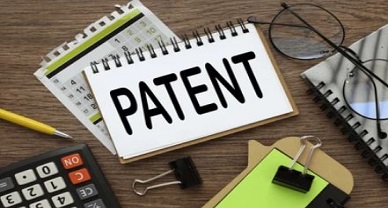An All-Inclusive guide to Protect invention under IP (Patent)
The protection of patent innovations falls under Intellectual Property (IP) framework Intellectual Property operates as a vital instrument to defend all types of innovations and original works of authors and developers in today’s economy. Patents constitute a fundamental element within intellectual property alongside other types since they safeguard innovative inventions. Obtaining a patent grants the inventor the right to stop all unauthorized uses of their invention that include making or using or selling or distributing it. This article explains the patent protection process for inventions through systematic review of patent acquisition procedures together with patent eligibility requirements along with patent enforcement strategies. The IP system of the government provides patents through which inventors and assignees obtain exclusive rights. Patents enable inventors to receive unique rights for their creations for a predetermined timeframe of twenty years which starts from the date of filing until the invention reaches public domain. Patent holders must share technical descriptions related to their invention after receiving exclusive usage authorization from authorities. The patent system gives its owner exclusive rights to utilize newly invented concepts but requires the inventor to reveal technical information about the creation to the public. A patent confers upon the holder the right to block any form of utilization of an invention by parties different from the patent owner.
Today’s intellectual property serves as a critical protective mechanism for innovation and creations which follow the established steps to protect a patent invention.
Breakdown on how to protect invention:
- Ensure Your Invention is Patentable:
An assessment of patent eligibility must occur before applying for a patent. The main requirements to obtain a patent include all of the following:
- Novelty: Your invention needs to represent fresh ground because any previous public exposure of it will prevent patent protection. A new invention must not exist in any currently published literature nor can it be used in practice or patented elsewhere.
- Inventive Step: The invention needs to demonstrate inventive step as producers with basic skills in the field should not easily derive it from present knowledge or technology. A patent does not apply to instances where the invention represents easy improvements and combinations of previously patented concepts.
- Industrial Applicability: The invention must present practical commercial possibilities by which manufacturing industries can utilize it. To obtain patent protection an invention needs functioning capability which yields specific usable features or implementations.
- Sufficient Disclosure: A sufficient disclosure of the invention proves necessary for any competent individual to create it without struggling with excessive trial and error.
- Conduct a Patent Search:
Performing a patent search becomes essential for applicants seeking to file patents because their findings will determine the existence of similar patents. A thorough search process through relevant databases enables investigators to find the prior art material which assesses the uniqueness along with inventive step of your invention. Entity patent seekers can access exclusive patent information databases at three authorities: United States Patent and Trademark Office (USPTO) and European Patent Office (EPO) and World Intellectual Property Organization (WIPO). Evaluating existing patents requires professional expertise because patent attorneys or agents conduct these searches with full commitment to detail.
- Prepare a detailed description:
The invention needs a profound description which details its structure and functioning while having all needed technical details. The description has an official name which is the specification. Part of fulfilling patent law requirements requires specifications to be both precise and straightforward and descriptive enough for patent law compliance. A patent specification must include several key components which consist of:
- The invention receives a descriptive title and an abstract summarizes its key features and a background section explains the problem to solve then detail description follows Abstract: a brief summary about the invention.
- History encompasses the circumstances along with the existing difficulties which the invention aims to address. The detailed description of the invention outlines both its workings and includes illustrations and diagrams and flowcharts. Claims represent the vital element because they establish what is protected. The patent protection varies according to the claims which delineate distinct components of the invention.
- Submission of Application:
Preparing a patent application becomes the essential next task after invention completion for securing patent protection. Every jurisdiction has separate filing procedures while providing at least two methods through national patent applications and direct filing with national patent offices. National or regional patent approval allows a protected status in the designated territories. The application must be filed in the correct format, and all required fees must be paid. Patent authorities perform an examination of the application to verify patentability requirements thus potentially leading to additional clarification needs or required amendments.
- Patent Examination:
The patent office conducts patent examination work following an application submission to validate if the invention satisfies patent laws. At this point the patent examiner evaluates the application which could result in an office action requiring more details about claim modifications and clarification together with additional data. During this stage the applicant conducts several rounds of communication with the patent office to handle their concerns through application modifications and claim redefinitions for defining invention boundaries.
- Patent Grant and Protection:
After reviewing the submitted requirements alongside all patentability criteria the patent office grants a patent to approved innovations. When the issuing patent authority approves an application the patent holder acquires a right to stop others from using creating marketing or distributing the patented invention across the jurisdiction. Operations protected through patents receive their granted duration based on the date when applications were submitted and need continuous payment of upkeep fees to stay active for about 20 years.
- Enforce Patent Right:
After obtaining a patent position one must focus on its enforcement capabilities. A patent does not by itself stop others from using your patented ideas. The patent holder remains responsible for checking market activity for possible intellectual property violations which allow them to conduct legal proceedings when required. Someone using your patented invention without authorization will provoke you to take the following actions: A cease-and-desist letter represents a formal notice which demands the infringing party to cease the usage of your invention. You can achieve a licensing agreement which enables others to use your patented invention while you receive payment but skip legal actions. The continuation of infringement requires either court proceedings to file a lawsuit which enables you to seek monetary damages along with obtaining an order for protection. Some jurisdictions provide both legal options for patent disputes and alternative mechanisms like mediation or arbitration which authorities can use to resolve patents. Additional Considerations in Patent Protection Patents granted by a nation remain effective only within that particular jurisdiction yet product developers can extend their protection using the PCT system alongside European Patent Convention regional arrangements. The patent enters individual prosecution after submitting an international application. After patent grant approval patent owners need to pay periodic fees for maintaining patent rights. Patent holders who do not pay fees will experience their patent’s expiration before the designated term concludes. The public domain becomes accessible to anyone after the patent term expiration when patent protection ends. Patent holders need to extract maximum commercial revenue from their invention during the time period before the patent termination.
Several patent holders select patent licensing because it permits other entities to utilize their inventions for manufacturing or selling products while receiving payment through royalties or alternative compensations. Usage of this approach permits financial value extraction and business expansion from the innovation across different markets.
Conclusion:
The first essential step for an inventor to secure protection of their invention and derive value from it involves obtaining patent law protection. Following proper patent filing procedures combined with patentability criteria fulfilment allows inventors to protect their intellectual property rights which results in valuable patent outcomes. Professional attention from qualified patent attorneys and agents streamlines patent protection procedure and generates higher probabilities of successful patent defence.
Author: Durgesh Patwal, in case of any queries please contact/write back to us via email to chhavi@khuranaandkhurana.com or at Khurana & Khurana, Advocates and IP Attorney.
Reference:
https://www.wipo.int/en/web/patents/protection
https://www.lexology.com/library/detail.aspx?g=c0cdc531-e522-40b9-96a9-8dbf5e5c4bd6
https://www.findlaw.com/smallbusiness/intellectual-property/how-to-protect-your-invention.html



